
Let’s Markdown is a fast, minimal web editor that makes markdown editing collaborative and accessible to everyone. Let’s Markdown is a self hosted markdown editor. In this step by step guide I will show you how to install Let’s Markdown on your Synology NAS using Docker.
Top Let’s Markdown features:
- Live collaborative markdown editing and preview.
- VSCode-like editor with support for command palette (syntax highlighting, autocomplete, editor themes).
- Minimal setup with no login required – say goodbye to malicious trackers and privacy invasions.
- Efficient backend built with Rust and WebAssembly.
- Dark and light mode.
- Emoji support with shortcuts enabled.
- Upcoming features: cursors tracking, synced scrolling, subscript/footnote/insert support, and more.
STEP 1
Please Support My work by Making a Donation.
STEP 2
Install Container Manager via Synology “Package Center”. If you run an older DSM version (under 7.2), search for Docker instead of Container Manager.
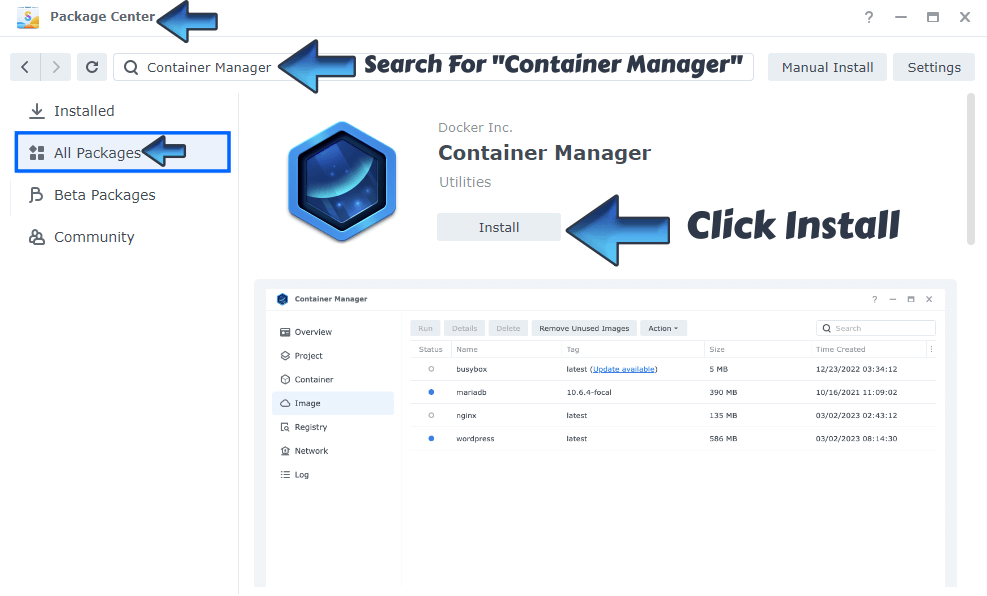
STEP 3
Make sure you have a synology.me Wildcard Certificate. Follow my guide to get a Wildcard Certificate. If you already have a synology.me Wildcard certificate, skip this STEP.
STEP 4
Go to Control Panel / Login Portal / Advanced Tab / click Reverse Proxy. Follow the instructions in the image below.
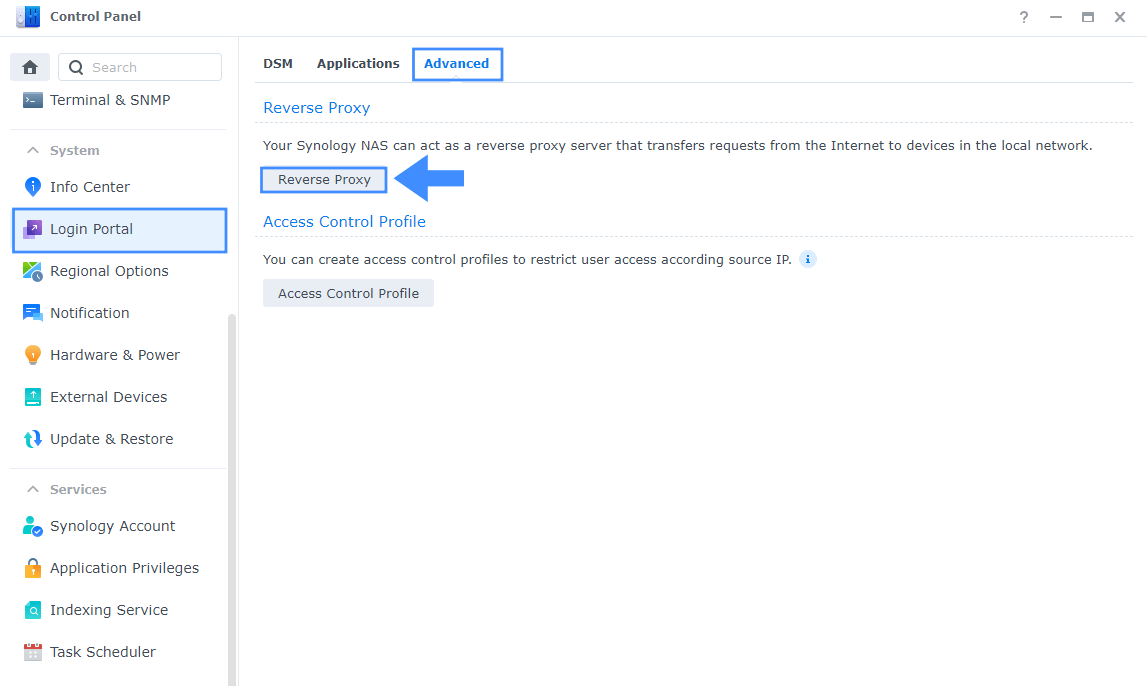
STEP 5
Now click the “Create” button. Follow the instructions in the image below.
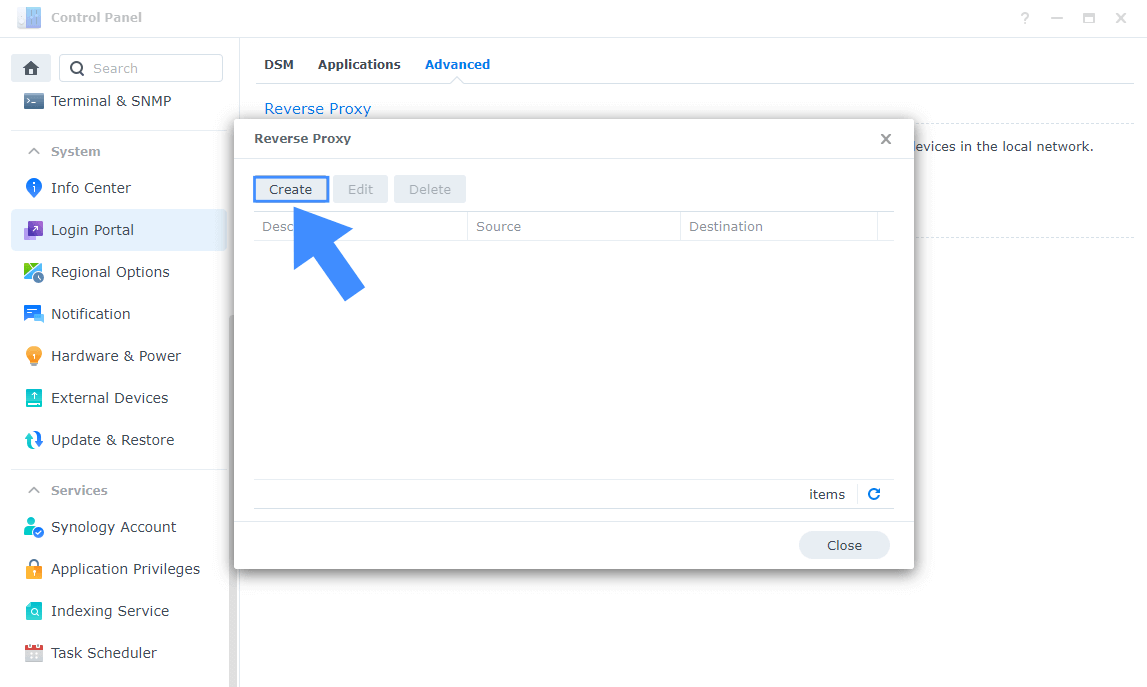
STEP 6
After you click the Create button, the window below will open. Follow the instructions in the image below.
On the General area, set the Reverse Proxy Name description: type in Let’s Markdown!. After that, add the following instructions:
Source:
Protocol: HTTPS
Hostname: letsmarkdown.yourname.synology.me
Port: 443
Check Enable HSTS
Destination:
Protocol: HTTP
Hostname: localhost
Port: 3030
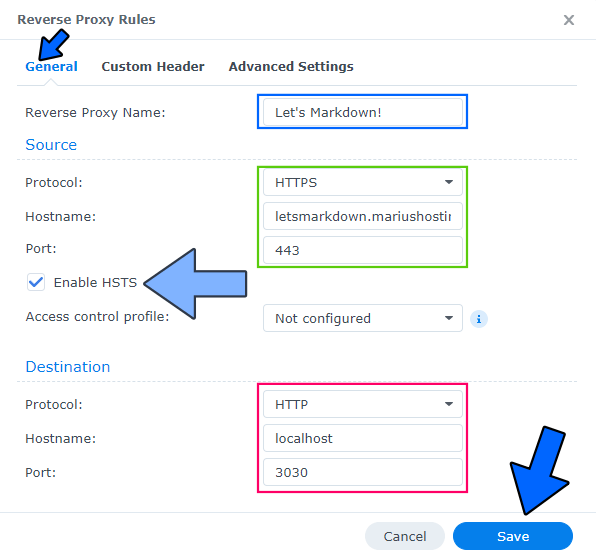
STEP 7
On the Reverse Proxy Rules, click the Custom Header tab. Click Create and then, from the drop-down menu, click WebSocket. After you click on WebSocket, two Header Names and two Values will be automatically added. Click Save. Follow the instructions in the image below.

STEP 8
Go to Control Panel / Network / Connectivity / Check Enable HTTP/2 then click Apply. Follow the instructions in the image below.
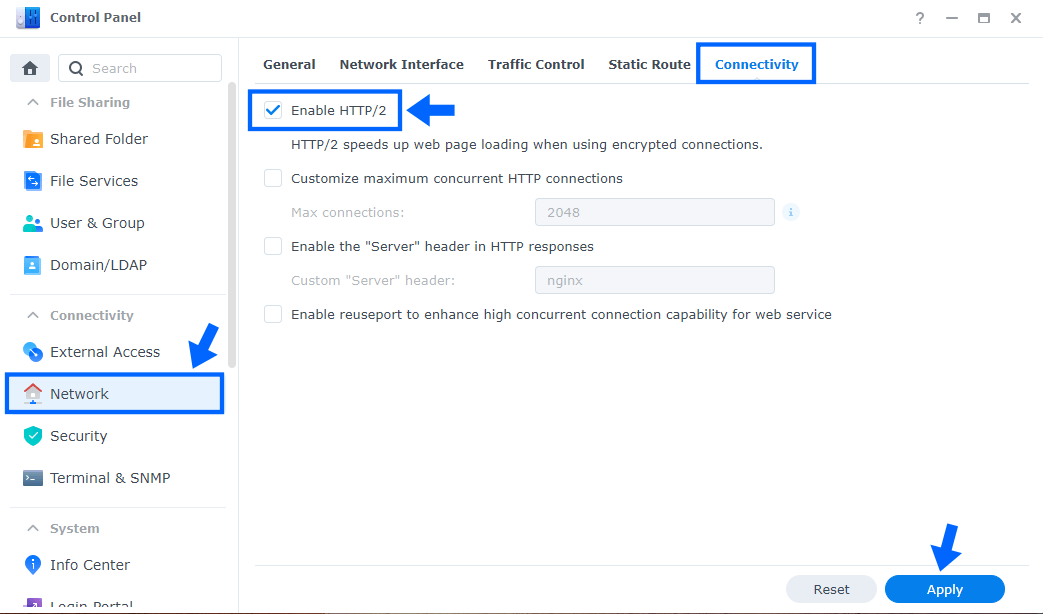
STEP 9
Go to Control Panel / Task Scheduler / Create / Scheduled Task / User-defined script. Follow the instructions in the image below.
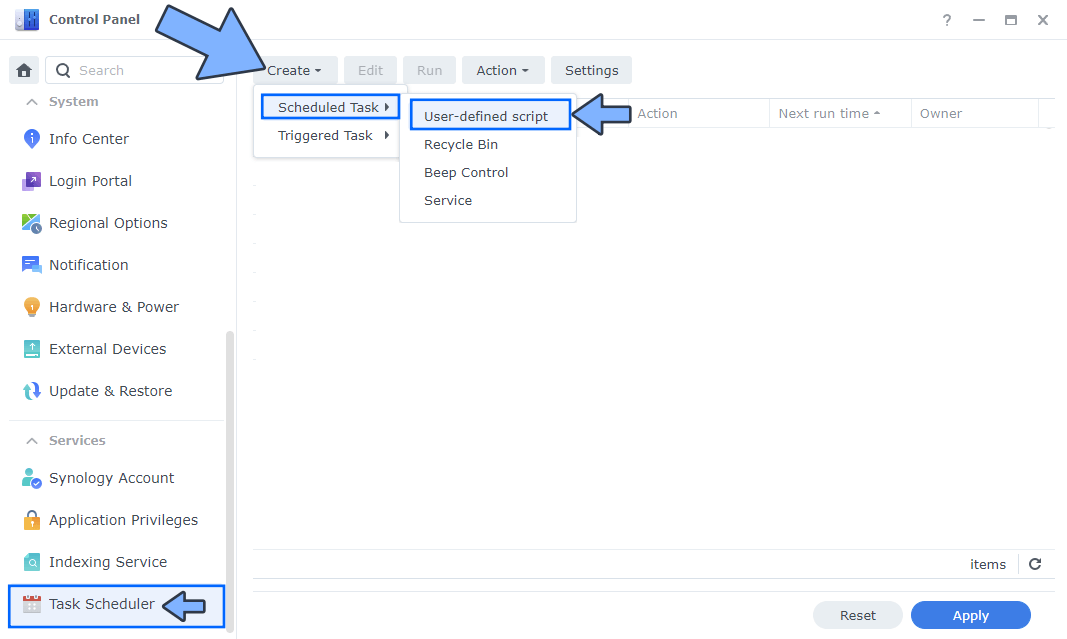
STEP 10
Once you click on User-defined script, a new window will open. Follow the instructions below:
- General: In the Task field type in Install Letsmarkdown. Uncheck the “Enabled” option. Select root User.
- Schedule: Select Run on the following date then select “Do not repeat“.
- Task Settings: Check “Send run details by email“, add your email then copy paste the code below in the Run command area. After that, click OK.
docker run -d --name=letsmarkdown \ -p 3030:3030 \ --restart always \ cveinnt/letsmarkdown
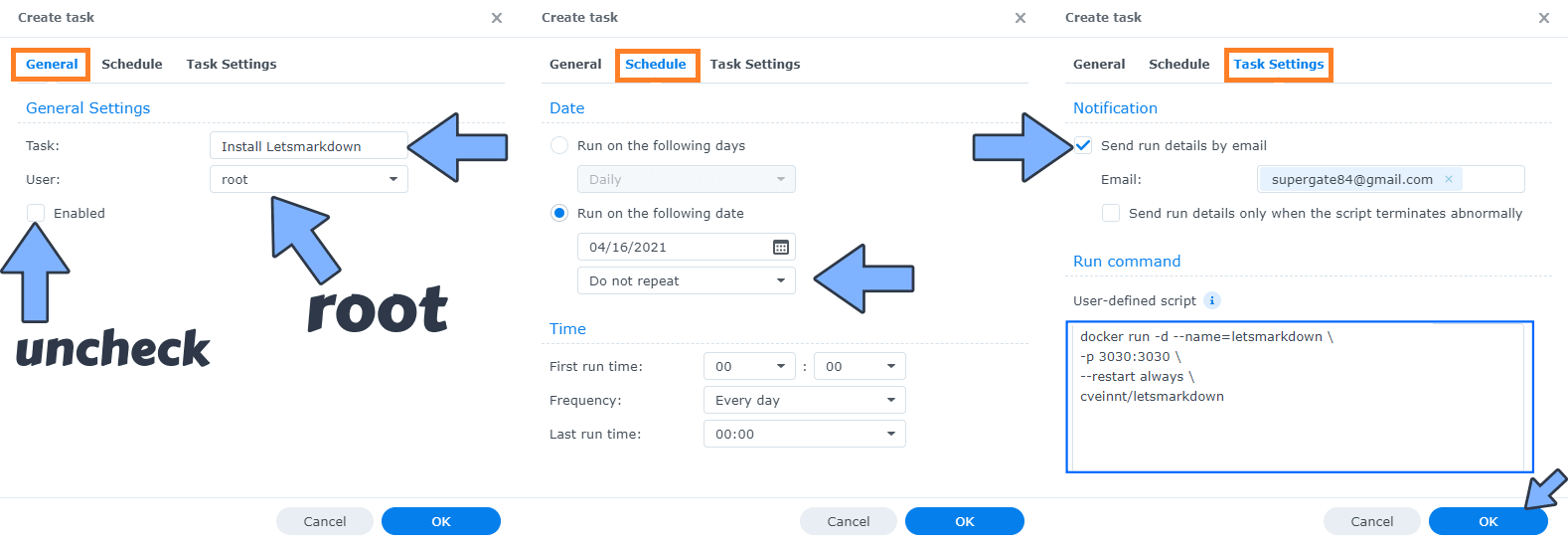
STEP 11
After you click OK on STEP 10 a new warning pop up window will open. Click OK.
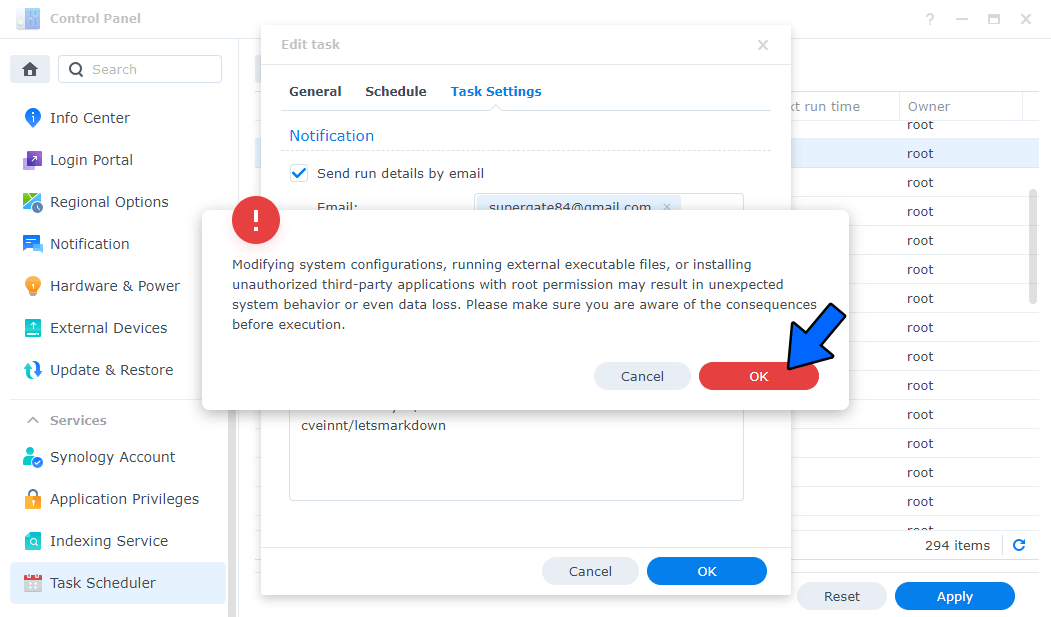
After you click OK, type in your DSM Password then click Submit. Follow the instructions in the image below.

STEP 12
After you click Submit on STEP 11, select your “Install Letsmarkdown” Task then click the “Run” tab. You will be asked to run Install Letsmarkdown – click OK. Follow the instructions in the image below.
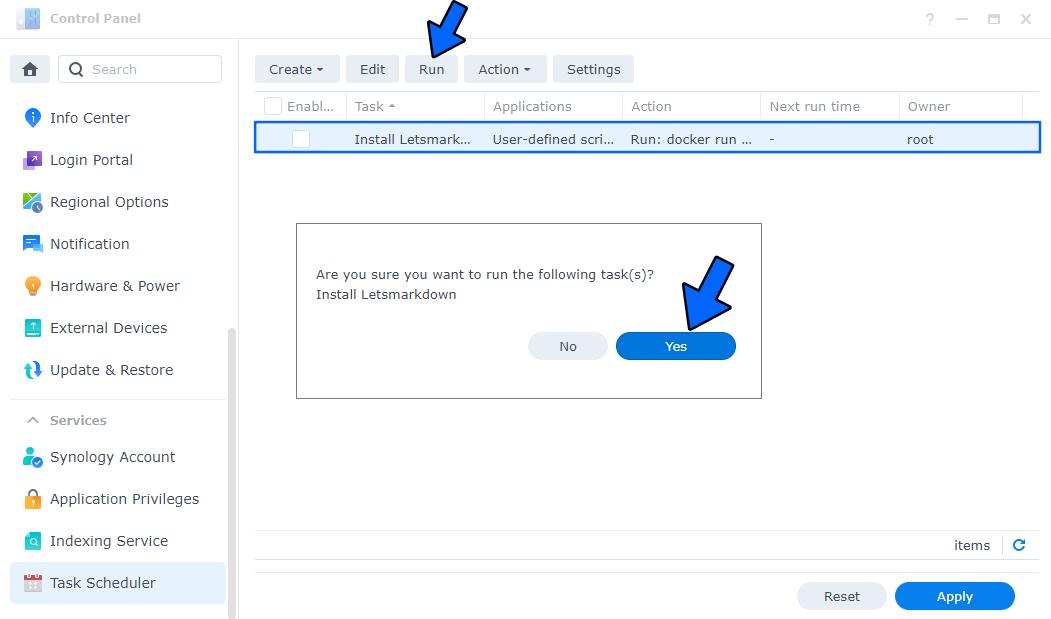
STEP 13
🟢Please Support My work by Making a Donation. Almost 99,9% of the people that install something using my guides forget to support my work, or just ignore STEP 1. I’ve been very honest about this aspect of my work since the beginning: I don’t run any ADS, I don’t require subscriptions, paid or otherwise, I don’t collect IPs, emails, and I don’t have any referral links from Amazon or other merchants. I also don’t have any POP-UPs or COOKIES. I have repeatedly been told over the years how much I have contributed to the community. It’s something I love doing and have been honest about my passion since the beginning. But I also Need The Community to Support me Back to be able to continue doing this work.
STEP 14
Now open your browser and type in your HTTPS/SSL certificate like this https://letsmarkdown.yourname.synology.me In my case it’s https://letsmarkdown.mariushosting.synology.me you can easily switch to Dark Mode and share your letsmarkdown link with your friends.
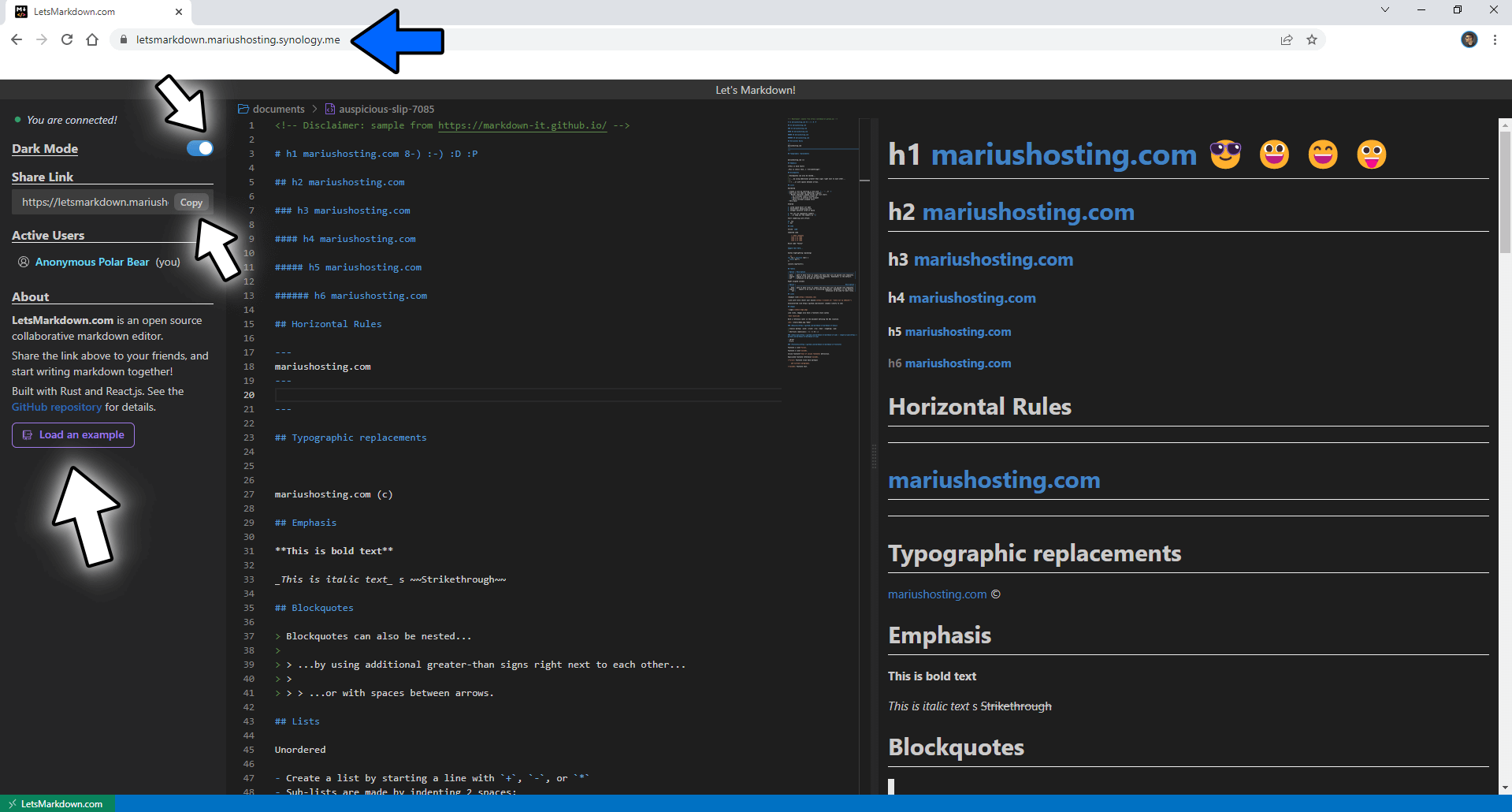
Enjoy Let’s Markdown!
If you encounter issues by using this container, make sure to check out the Common Docker issues article.
Note: Can I run Docker on my Synology NAS? See the supported models.
Note: How to Back Up Docker Containers on your Synology NAS.
Note: Find out how to update the Let’s Markdown container with the latest image.
Note: How to Free Disk Space on Your NAS if You Run Docker.
Note: How to Schedule Start & Stop For Docker Containers.
Note: How to Activate Email Notifications.
Note: How to Add Access Control Profile on Your NAS.
Note: How to Change Docker Containers Restart Policy.
Note: How to Use Docker Containers With VPN.
Note: Convert Docker Run Into Docker Compose.
Note: How to Clean Docker.
Note: How to Clean Docker Automatically.
Note: Best Practices When Using Docker and DDNS.
Note: Some Docker Containers Need WebSocket.
Note: Find out the Best NAS Models For Docker.
Note: Activate Gmail SMTP For Docker Containers.
This post was updated on Wednesday / August 27th, 2025 at 7:47 PM
